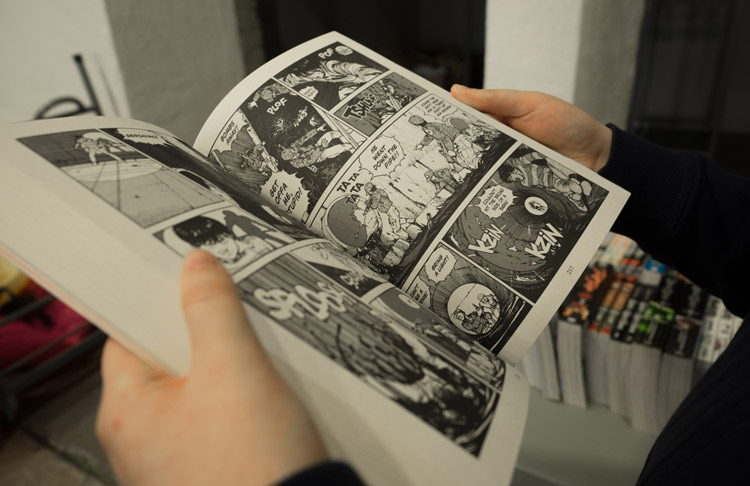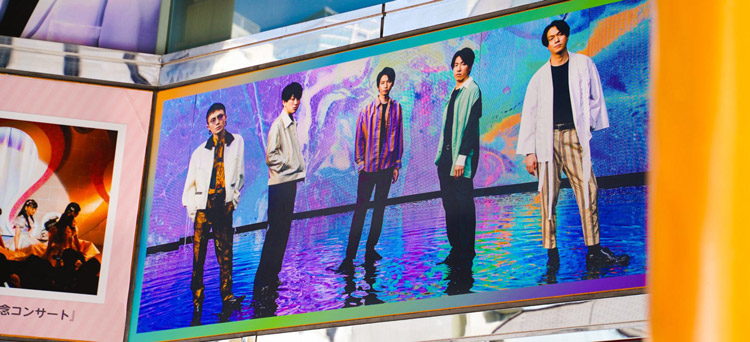Japan has contributed a lot to the world of art and entertainment. In the past few decades, Japanese pop culture has flourished at an exponential rate. Countless Japanese musicians, filmmakers, screenwriters, and actors have shaped contemporary pop culture and influenced the way the world is looking at creative expression.
With the advent of the internet and globalization, the world has become a smaller place, but at the same time, a more connected place. Pop culture, an international phenomenon, has become a common factor in almost every household. From anime to video games, from pop music to manga, and from Kabuki to hybrid cars, Japan has a huge impact on the world of pop culture.
Japan has long been a source of inspiration for artists and creators from all over the world. But how exactly did Japanese culture influence the whole world and the views of millions of people? Read more to find out.
Anime

Anime is a popular Japanese animation genre targeted at youths and adults, which went from a cult following to a pop culture worldwide phenomenon. Understanding anime is extremely important since anime is a massive force in the film business. It bears a lot of weight in terms of consumer behaviour.
Popular icons have generated a plethora of revenue streams. If it weren’t for anime and the Japanese film industry, we wouldn’t have Studio Ghibli, Cowboy Bebop, Dragonball Z, Demon Slayer, Akira, or the ever-popular live-action show Power Rangers.
Initially, it took a while for Westerners to get their hands on Japanese animation. There were a few shows like Star Blazers that made it to American television, but they were almost always “Americanized” to the point of being unrecognisable. When a few people noticed that what they were watching was unusual from American television programming, they eventually realised the show’s Japanese roots.

By the mid-80s Japanese films and cartoons began to be sold in the United States and European countries at an exponential rate. Anime fan clubs sprung up all throughout America, first on college campuses, but soon in high schools and extracurricular organisations as well. By 1995, the Japanese animation technique acquired a small but committed following in the West. This laid the groundwork for massively successful series like Pokémon to prosper, thus establishing anime’s influence in Western culture.
Today, Anime is universally appreciated amongst kids, teenagers, and adults who, even today, can watch popular series non-stop for weeks. However, young people should not forget about the educational process. Even a new episode should not become an obstacle between you and your papers.
But what if you can’t wait and are willing to delegate your assignments? In this case, you should find reliable writing service. But don’t forget to start with the samedayessay reviews to know which companies are not worth your attention. Such a plan will allow you to watch a new anime series and not be distracted by insignificant activities.
Manga

There are many types of Japanese forms of entertainment , but manga is among the most widely consumed. Popular with both adults and children, manga is read on a weekly basis or in serial form in major daily newspapers around the country.
Manga books and magazines account for 35-40% of all Japanese publishing sales each year, demonstrating the breadth and depth of interest in these products among Japanese consumers. Spreading throughout the world, young people’s pop-culture relies heavily on manga, which is both an influential medium and a substantial source of cultural enjoyment.

Manga covers a wide range of topics. They are amusing, inventive, inspiring, philosophical, artistic, trashy, and even enlightening. They depict a variety of subjects, including romance and work, as well as sports in schools, homes, kitchens, workplaces, and even politics. They reflect a broad spectrum of emotions, qualities, and vices such as konjō (bravado), success through hard effort, self-denial, commitment, perseverance, physical prowess, pluck, or unrequited love.
Manga’s high societal recognition today may come as a surprise, given its origins as a kind of children’s amusement. However, it is now a literary genre deserving of serious critical consideration.

Initially, Japanese pop culture was formed under the influence of American music. In a way, J-Pop has become a mix of classic pop and Enka (traditional Japanese pop music). It’s a mix of jazz, R&B, and Hip-Hop music. Most J-Pop songs have frequent asynchronous tunes and dance rhythms.
It’s important to note that J-Pop is not a fleeting phenomenon. In truth, it can be traced back to popular jazz music of the early Showa era, which lasted from 1926 through the conclusion of World War II in 1945. Instruments that were previously traditionally utilised in military marches and classical music influenced the J-pop sound. After the war paused jazz music, it returned in a large manner, and 1952 became known in Japan as the “Year of the Jazz Boom.”
Then there was Japan’s rock-and-roll craze, which began in 1956 and culminated in 1959, when a famous film featured Japanese rock-and-roll musicians. Following that, other performers began to combine traditional Japanese pop music with rock-n-roll.

Other musicians inspired by Western music covered popular American tunes, giving birth to the term “cover pop.” Japanese pop music started to thrive in the 1970s and 1980s, and by the 1990s, J-Pop was the buzzword. Two decades later, and the popularity of J-Pop performers has expanded all over the globe.
As a result of the widespread impact of J-Mainstreampop in today’s pop music business, artists in the United States, Korea, and Europe are increasingly incorporating J-Pop influences into their techno and dance music. To produce trance music, some European artists even use Japanese folk instruments like Sanshin.
Kawaii Culture

Kawaii cute culture began in Japan, as a result of student uprisings in the late 1960s. In a show of defiance against authority, Japanese university students declined to attend lectures in favour of reading children’s comics (manga) instead.
Cute as a style came to be conveyed via infantile handwriting, speech, attire, goods, stores, cafés, and cuisine as the economy developed during the 1970s and 1980s. Meanwhile, as Japanese women became increasingly visible at work, the “burikko,” or childish woman, arose, projecting an innocence and adorability that mitigated the danger of female freedom, boosting her attractiveness as a possible marriage partner.
By the 1990s, Japan’s economic crisis had begun, and many Japanese subcultures had spread to the international market. Companies and commercial airlines started to experiment with adorable as a marketing technique, and cultural forms followed in the footsteps of Japan’s once-invincible corporate machine, extending the soft power of Japanese modernity.
Kawaii is now prevalent in Japanese culture and worldwide. The Japanese government, aware of the international appeal of Kawaii, has even gone so far as to recruit ambassadors to spread the culture of cuteness around the world.
Today, Tokyo is known across the globe for its distinct street styles, which is both slick and wild. If you visit the Harajuku neighbourhood, you’ll see that Kawaii has made its imprint not just in the realms of fashion and pop culture, but also in eateries and cafés around the city.
Fashion

There is a long history of distinctive and attractive apparel in Japanese fashion, ranging from the traditional kimono to the Tokyo street style. In so many ways, Japanese fashion has shaped the history of fashion.
Japan is known as one of the world’s fashion capitals. Fashion in Japan has grown in popularity as a result of the country’s fascinating history and culture. The cultural diversity of Japan has given rise to unique fashion interpretations and trends, some of which may still be seen in today’s haute couture street fashion.
Japan has been the primary source of exotic fashion inspiration since the early 1850s, when international trade began. A new universe of patterns, fashions, and even materials has opened up in Japan.
In Japan, western-style attire was primarily restricted to uniforms before World War II. Private civilians continued to wear various kimonos.
Following the end of WWII, the United States occupied Japan. This inevitably resulted in a significant degree of Western influence on culture, particularly dress. Items from American pop culture, such as blue jeans and t-shirts, came to dominate popular fashion.
The domestic Japanese fashion scene remained small until the end of the twentieth century. It wasn’t until the 1990s that the fashion business fully took off, and designers started to take concepts imported from the West and transform them into something authentically and distinctly Japanese.

Today, Japanese clothing could be easily divided into two categories. Traditional clothing based on millennia-old Japanese customs is still widely worn. It is prevalent in formal dress, particularly for traditional religious occasions. Furthermore, many elderly people still prefer traditional Japanese attire, and traditional Japanese jobs frequently require people to wear traditional Japanese attire.
Traditional Japanese attire is distinguished by its emphasis on traditional art. Natural motifs such as waves and animals are included into designs because Japanese culture and its Shinto faith contain a great regard for nature.
The other category is high end street style that particularly the younger generation wear, in casual settings and on the street. This does not necessarily imply that you will see the same clothing in Japan as you would in the United States or Europe. Since the 1990s, the Japanese have experimented with and established a diverse spectrum of distinct fashion styles.

The history of Japanese film (Eiga) covers more than a century. In addition to Anime and Jidaigeki, cult horror films (like The Ring and Battle Royale, known in the west as J-Horror), Kaiju (monster films like Gojira), and Pink Films (soft-core pornographic films often more socially engaged and aesthetically well-crafted), Japan is the birthplace of a number of distinct genres and subgenres (Yakuza movies for example)
All Asian nations’ cinematic techniques have been influenced by Japanese film. Films directed by Akira Kurosawa, for example, were hailed in Japan and the West as among the greatest and most influential ever made. Kurosawa had a major influence on many American films. A growing number of Japanese films are gaining traction in the West. In the 20th century and early 21st century, the film has been the dominant storytelling form, and Japanese cinema has had a huge impact across the globe.
Video Games

It is unquestionable that the Japanese have had a massive impact on the video game business. In addition to generating some of the industry’s most famous titles, Japanese gameplay design and overall approach to game production has had a major effect throughout the globe, with numerous companies releasing games directly influenced by Resident Evil, Street Fighter, and Super Mario.
Whether it’s a Nintendo game like Super Mario, a Sega title like Sonic The Hedgehog, or an arcade game like Pac-Man, all of them are created by Japanese creators. These three titles alone have impacted and influenced the gaming industry’s trajectory.
Years after Pac-first Man’s debut, cherries would appear in games as things to gather, and even adventure games such as Dizzy had them for players to collect. Other games, such as Final Fantasy, have become timeless masterpieces that have been modernised and have spawned a whole series of sub-games.
Final Words
To this day, the influence of Japanese pop culture cannot be denied. Japanese pop culture affected the evolution of pop culture across the globe. In addition, a great amount of Japanese creators are still producing worldwide trends that have a direct impact on other nations. A worldwide trendsetter status, Japan’s success as a worldwide trendsetter lies in its social context, historical & spiritual identity, and pursuit for perfection.
















































